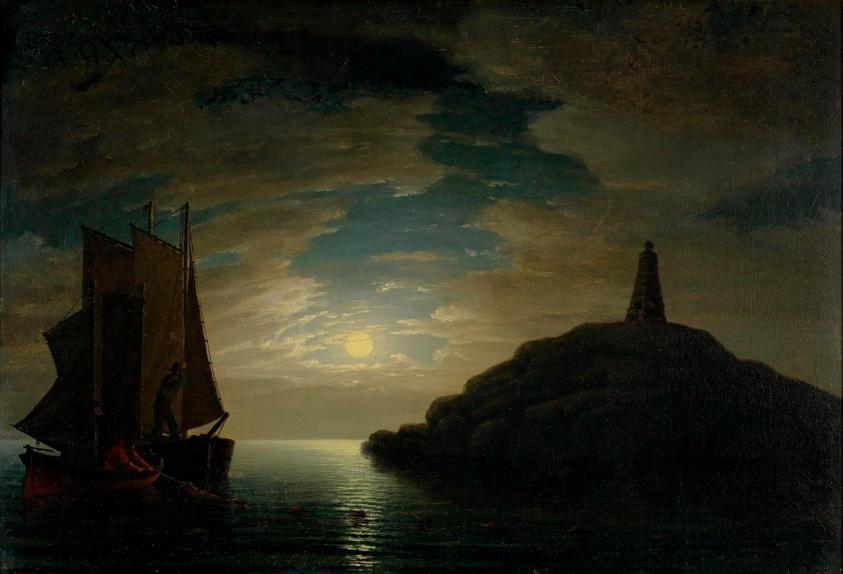
Artist:
Mary B. Mellen
(American, 1819 - 1886)
Moonlight Fishing Scene (Halfway Rock)
Alternate Title(s):Moonlight Harbor Scene
Alternate Title(s):Half Way Rock
Medium: Oil on canvas mounted on Masonite
Date: 1854
Dimensions:
18 × 26 3/16 in. (45.7 × 66.5 cm)
Accession number: 80.3.19
Copyright: © artist, artist's estate, or other rights holders
Label Copy:
For a long time, Mary Mellen was only known as a “copyist,” due to the fact that she painted versions of acclaimed artist Fitz Henry Lane’s marine paintings. She and Lane worked side-by-side, with styles so similar that it is difficult to tell the work of one artist from the other. Mellen improved her skills in this informal apprenticeship with Lane. In this painting, the moonlight seen through the parting clouds illuminates Halfway Rock in Maine’s Casco Bay and its lighthouse, which is curiously dark. The scene appears particularly dangerous as a fishing boat is precariously close to the rocky ledge.
Curatorial Remarksformerly attributed to Fitz Hugh Lane or Fitz Henry Lane.
Through the parting clouds of Mary Mellen’s painting, moonlight illuminates Halfway Rock in Maine’s Casco Bay and its lighthouse, which is mysteriously dark. The scene appears particularly dangerous as a fishing boat is precariously close to the rocky ledge. Mellen painted landscapes and seascapes, frequently with dazzling light effects, in crystalline clarity. This trend in painting, popular in New England, later came to be known as Luminism, a fitting term for the glowing canvases.
Mellen, like many women artists of the period, thought of herself as a copyist and was particularly well known for copying the work of her friend and mentor Fitz Henry Lane. Many of her known works are copies of Lane’s, often leading to confusion in attributing works in later years. Not fakes or forgeries, Mellen’s copies were created with Lane’s full knowledge, as they often worked together. Copying is a traditional means of training, particularly in America, where there were few formal art educational opportunities. Identifying Mellen’s works and adding them to the canon of American art is a significant step in recognizing the accomplishments of women artists.
Through the parting clouds of Mary Mellen’s painting, moonlight illuminates Halfway Rock in Maine’s Casco Bay and its lighthouse, which is mysteriously dark. The scene appears particularly dangerous as a fishing boat is precariously close to the rocky ledge. Mellen painted landscapes and seascapes, frequently with dazzling light effects, in crystalline clarity. This trend in painting, popular in New England, later came to be known as Luminism, a fitting term for the glowing canvases.
Mellen, like many women artists of the period, thought of herself as a copyist and was particularly well known for copying the work of her friend and mentor Fitz Henry Lane. Many of her known works are copies of Lane’s, often leading to confusion in attributing works in later years. Not fakes or forgeries, Mellen’s copies were created with Lane’s full knowledge, as they often worked together. Copying is a traditional means of training, particularly in America, where there were few formal art educational opportunities. Identifying Mellen’s works and adding them to the canon of American art is a significant step in recognizing the accomplishments of women artists.
On view